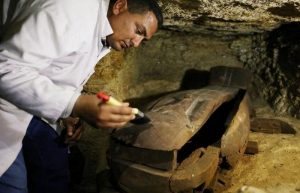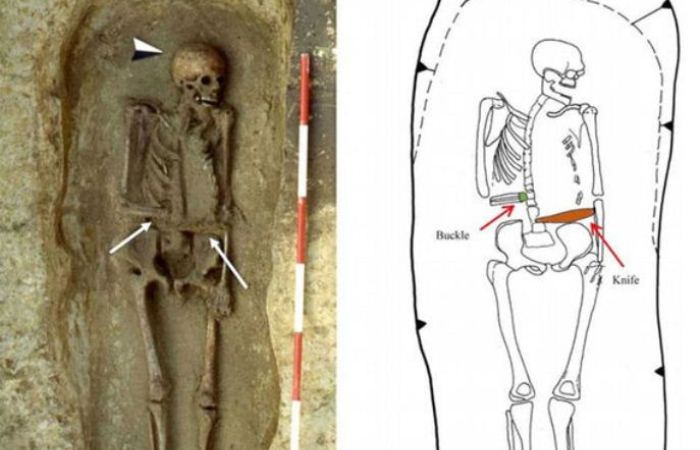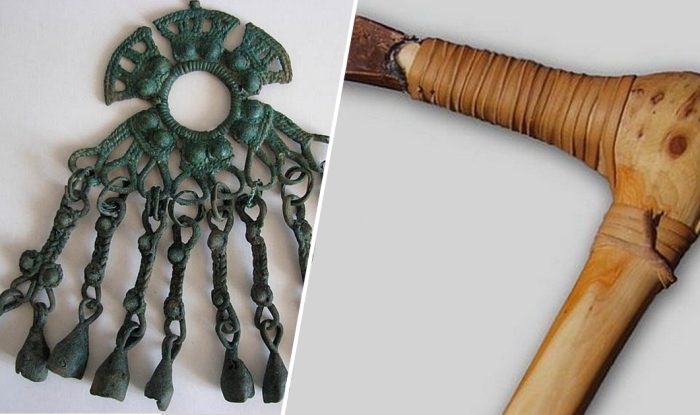10 new discoveries that turned the ideas of ancient Egypt upside down
 Ancient Egypt is full of secrets and therefore attracts scientists who are looking for clues to the secrets of civilization. And although the excavations in Egypt are carried out almost constantly, and at the same time using new scanning equipment, this ancient civilization constantly presents scientists with new surprises. New names of Egyptian kings, travels that changed history and even new discoveries in what seemed to be studied along and across the pyramids – quite recently many new discoveries were made, which will be discussed in this article.
Ancient Egypt is full of secrets and therefore attracts scientists who are looking for clues to the secrets of civilization. And although the excavations in Egypt are carried out almost constantly, and at the same time using new scanning equipment, this ancient civilization constantly presents scientists with new surprises. New names of Egyptian kings, travels that changed history and even new discoveries in what seemed to be studied along and across the pyramids – quite recently many new discoveries were made, which will be discussed in this article.
1. Cemetery of the Priests of Thoth
Thanks to this unusual discovery, the year 2018 can be another “critical” year for Egyptologists. Not far from the town of El Minya, in the Nile Valley, a large necropolis was discovered. It would seem that it is surprising, because this country is known for its mummies and cemeteries. But in the tombs of Minyi no ordinary inhabitants of Egypt or pharaohs rested. Instead, the families of priests were buried there. During their lifetime, the priests served God Thoth, the patron of wisdom and the Moon.
In one of the tombs belonging to the high priest, found more than 1000 statues. In addition, the last refuge of 40 members of his family was found in it, each of whom was buried in his own sarcophagus. The internal organs of the priest were “packaged” in four burial vessels, known as canopes. All the canopic and some of the coffins were decorated with hieroglyphs.
The priest himself was dressed in funeral robes embroidered with beads and decorated with bronze plates. This region is also known for the mass graves of mummified birds, animals and catacombs dating back to the Late period of the pharaohs and the times of the Ptolemaic dynasty. It will take about five years to complete cataloging and studying the findings.
2. Private tombs of Luxor
Luxor is famous for its ancient architecture and tombs. Among the latter you can find private tombs “overlooking the west bank of the Nile” Two such burials were first discovered at the end of 2017. Most likely, high-ranking officials rested in these 3,500-year-old tombs, since the cemetery was intended for Egyptians elites.
Despite this, the pair of tombs was very small in size. One tomb had a courtyard with a dirt floor and stone walls, as well as a tunnel that connected it to four additional chambers. Wall decorations indicated that the person was buried during the 18th dynasty, either during the reign of Pharaoh Amenhotep II, or Pharaoh Thutmose IV.
For some reason, the designers of the second tomb made five entrances to it, each of which led to the same rectangular chamber. It also contained two burial mounds and, unlike the first tomb, was filled with artifacts such as masks, a bandaged mummy, ceramics and 450 statues. The name of Pharaoh Thutmosis I on the ceiling allowed dating the burial to the beginning of the 18th dynasty.
3. Aspelt’s face
The kings of Kush once ruled ancient Egypt. By the time the ruler by the name Aspelta came in power (he reigned between 593 and 568 BC), they only ruled Kush. Despite this, he was often referred to in historical documents as the king of Egypt. Recently, excavations began at Dangeil, an archaeological site in Sudan. Inside the temple of the Egyptian god Amon, researchers are missing parts of the statue of Aspelta, discovered at the same place many years ago. When all the fragments gathered together, the world after thousands of years finally saw the face of Aspelta.
The 2600-year-old statue was written in Egyptian hieroglyphs. Aspeltu was praised as “the king of Upper and Lower Egypt” and “the pet of the god of the Sun Ra.” The statue, which was made in full size, was carved about six centuries after the temple was built near the Nile. Interestingly, centuries later after the building was abandoned, burials were still held here. No one knows who these people were.
4. Sons of Khnum-Aa
In 1907, the discovery of two mummies led to decades of “headaches” for researchers who like to establish family ties between people who lived thousands of years ago. Found a couple of kilometers south of Cairo, the couple rested side by side for 4,000 years. Named Khnum-Nacht and Nacht-Ankh, they were probably noble, judging from their rich graves. On each coffin, the female name “Khnum-Aa” was also written. She was described as the mother of both men, born 20 years apart.
Scientists could not prove that she was their mother or that men were brothers. There was no reference to their father, except that he was the local ruler. After comparing the physical qualities of men, including the shape of the skull and skin color, the researchers concluded that they are not related to each other. In 2018, DNA testing finally solved the mystery.



